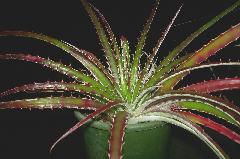
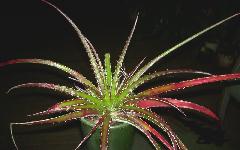
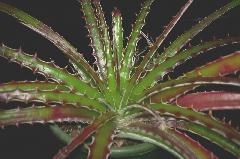
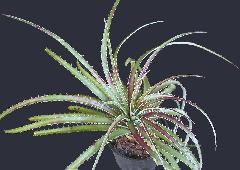
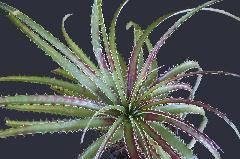
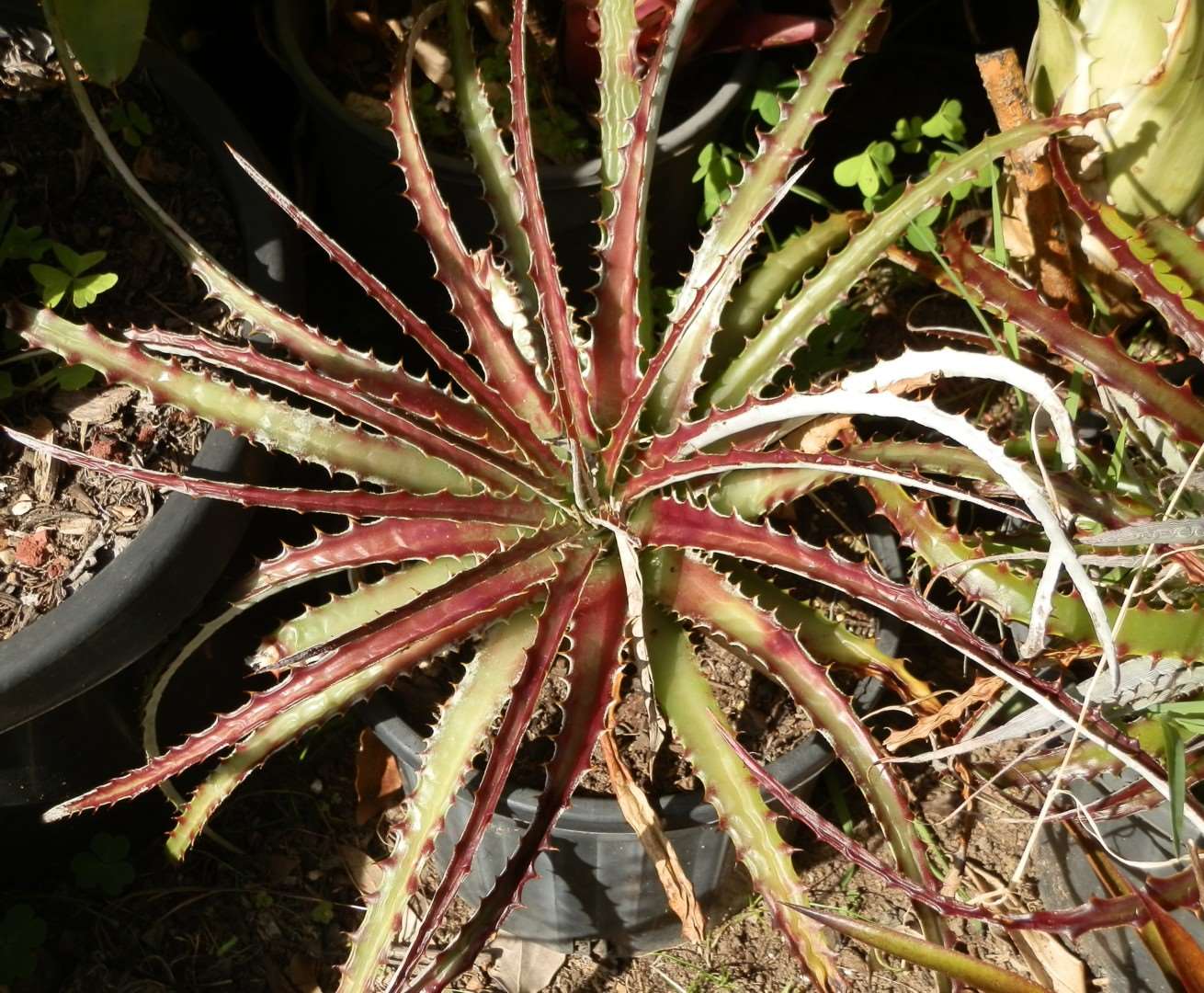
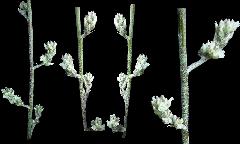
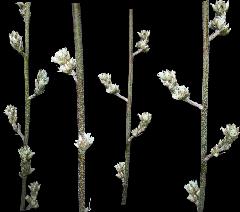
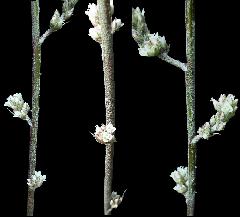
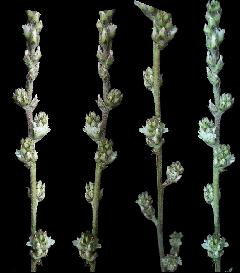
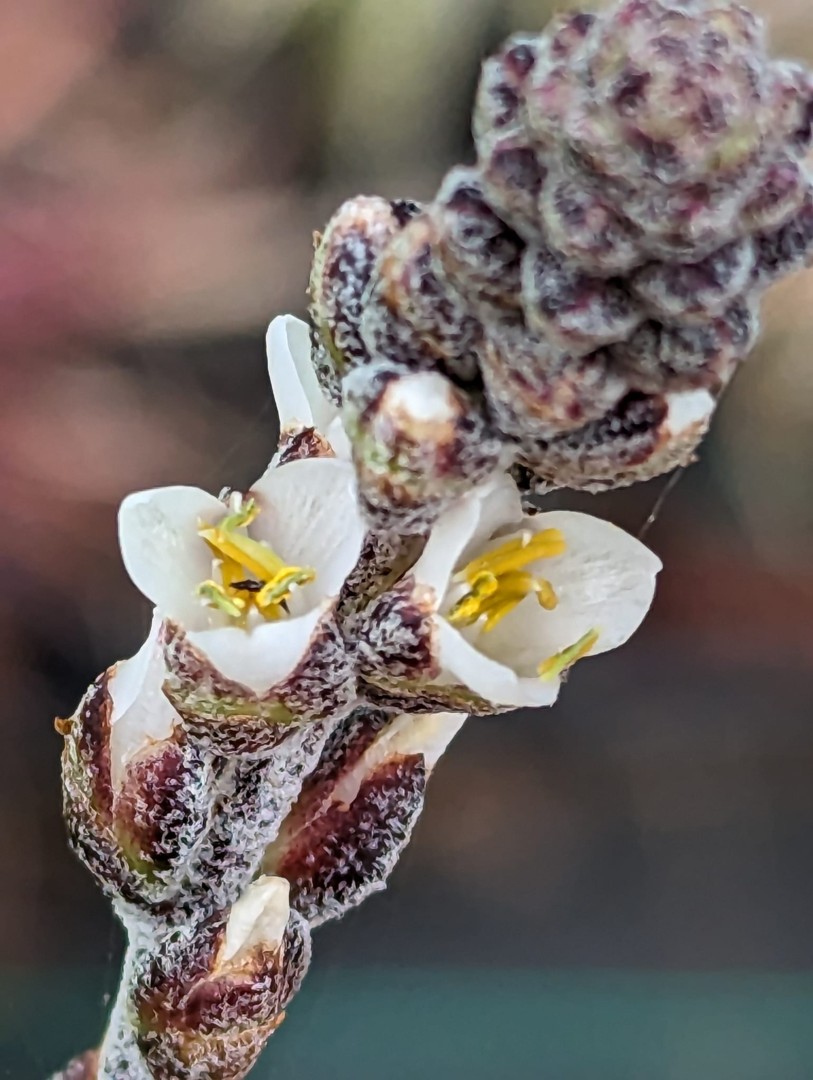
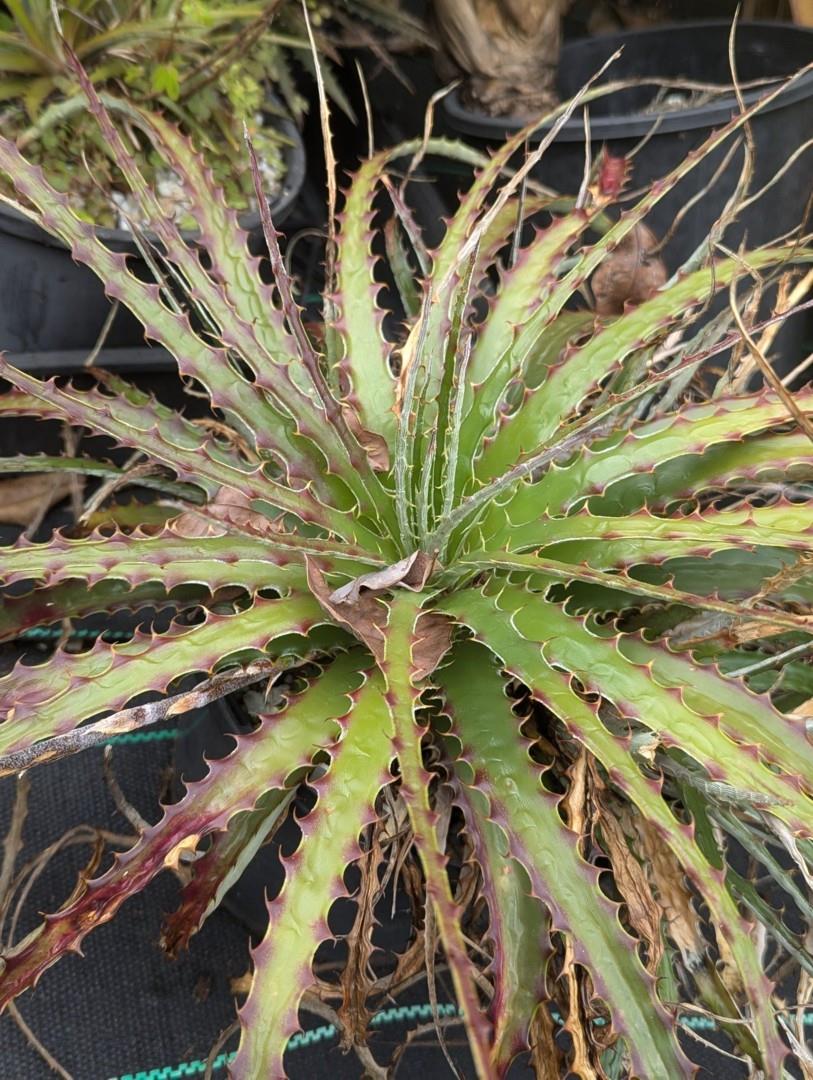
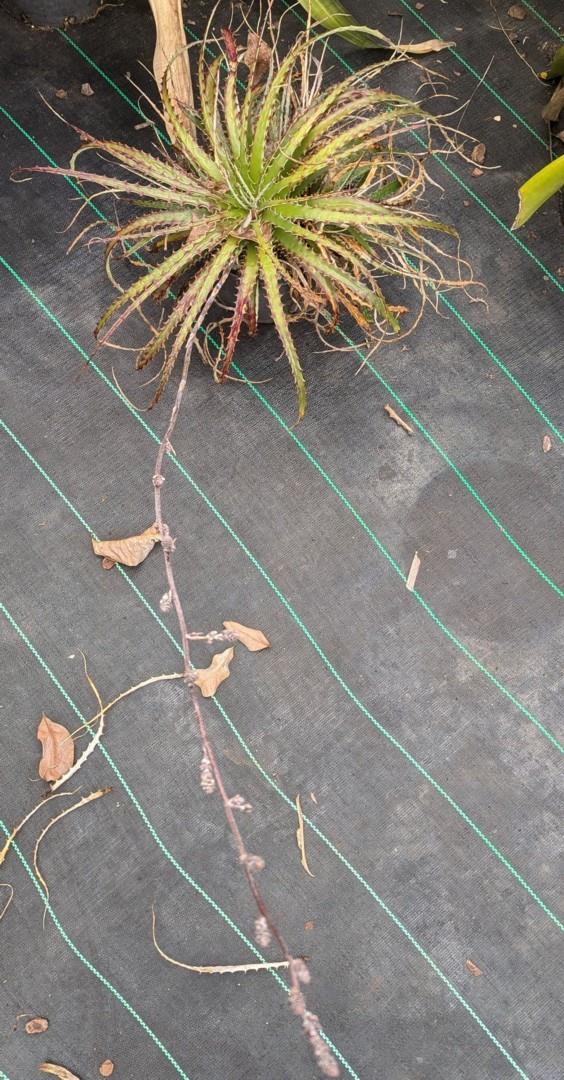
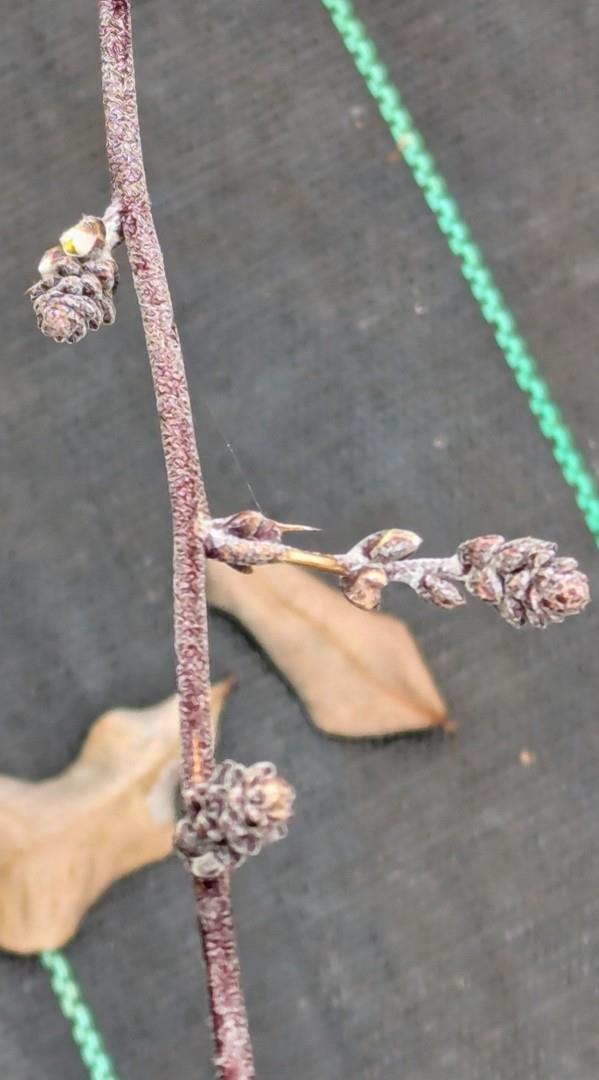
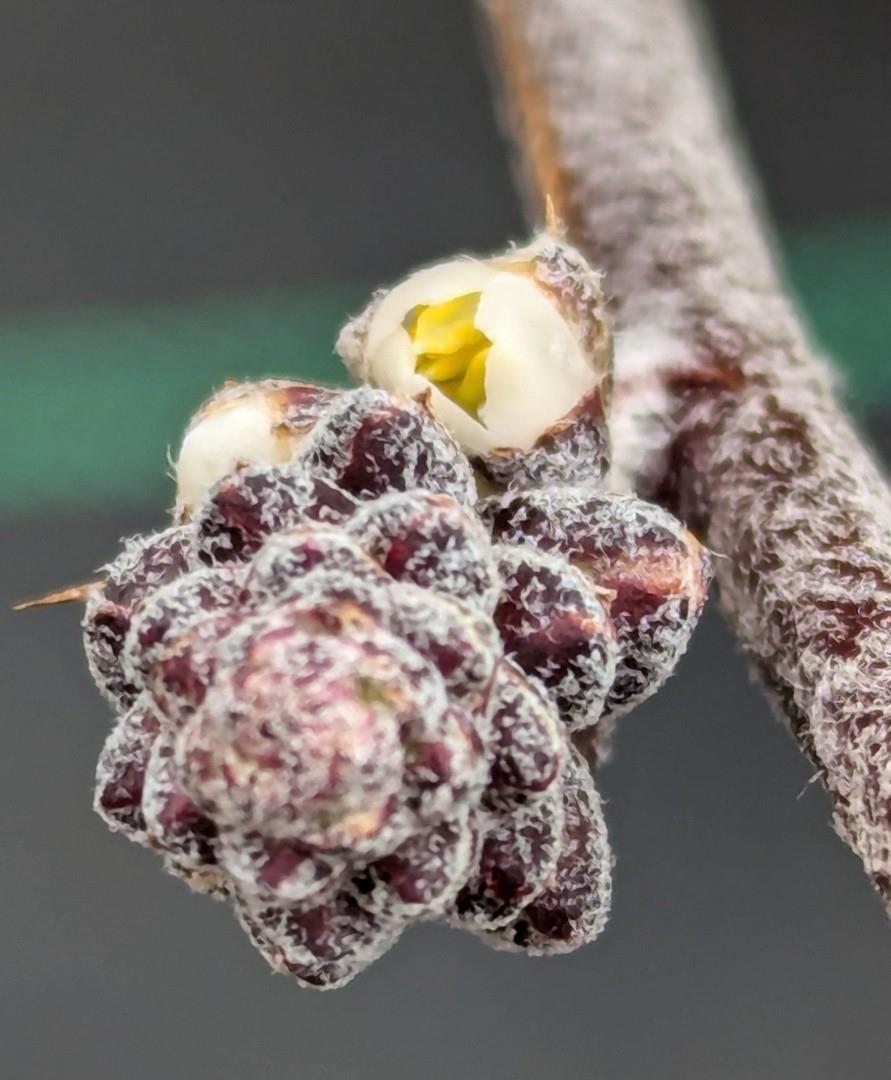
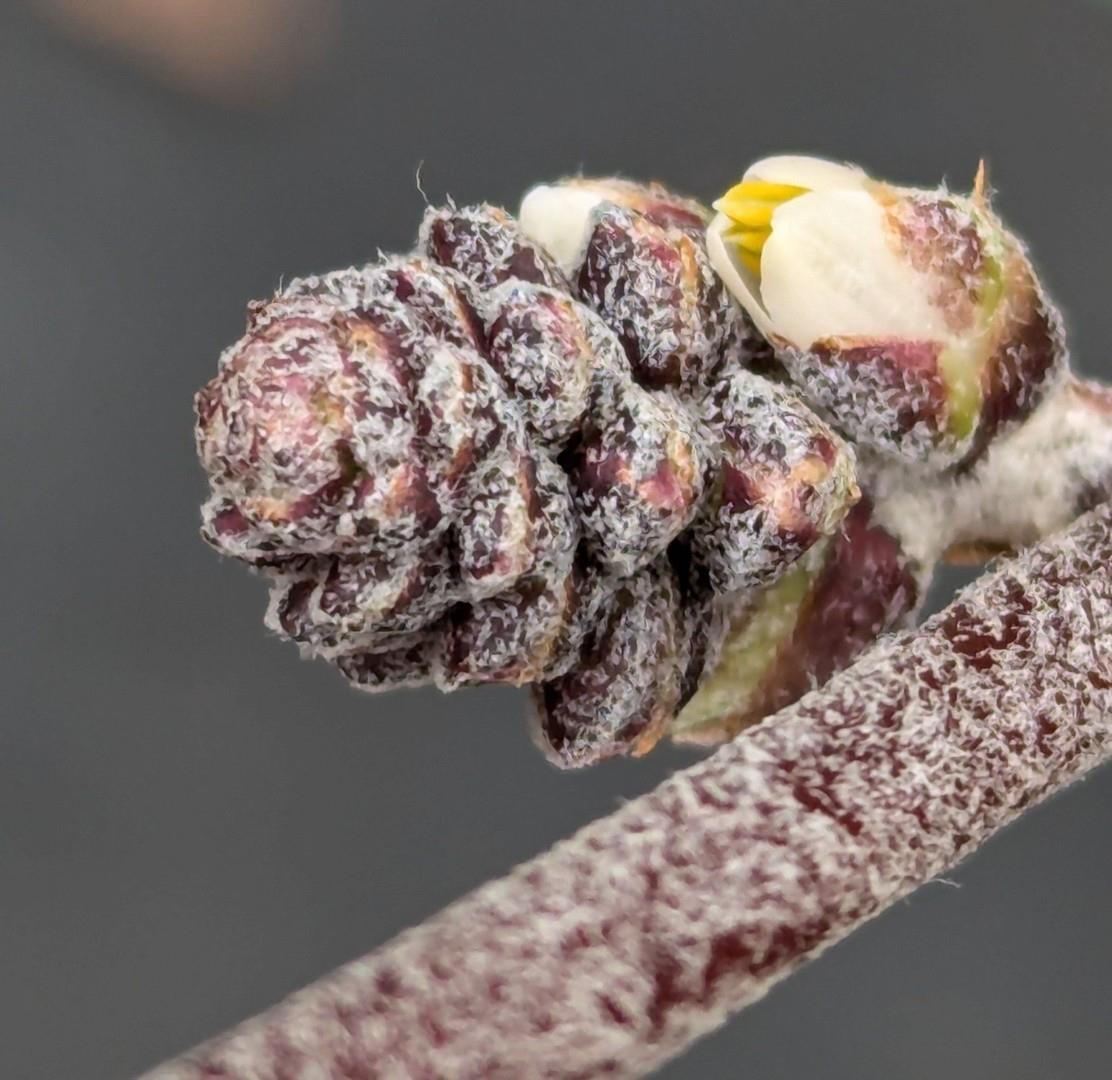
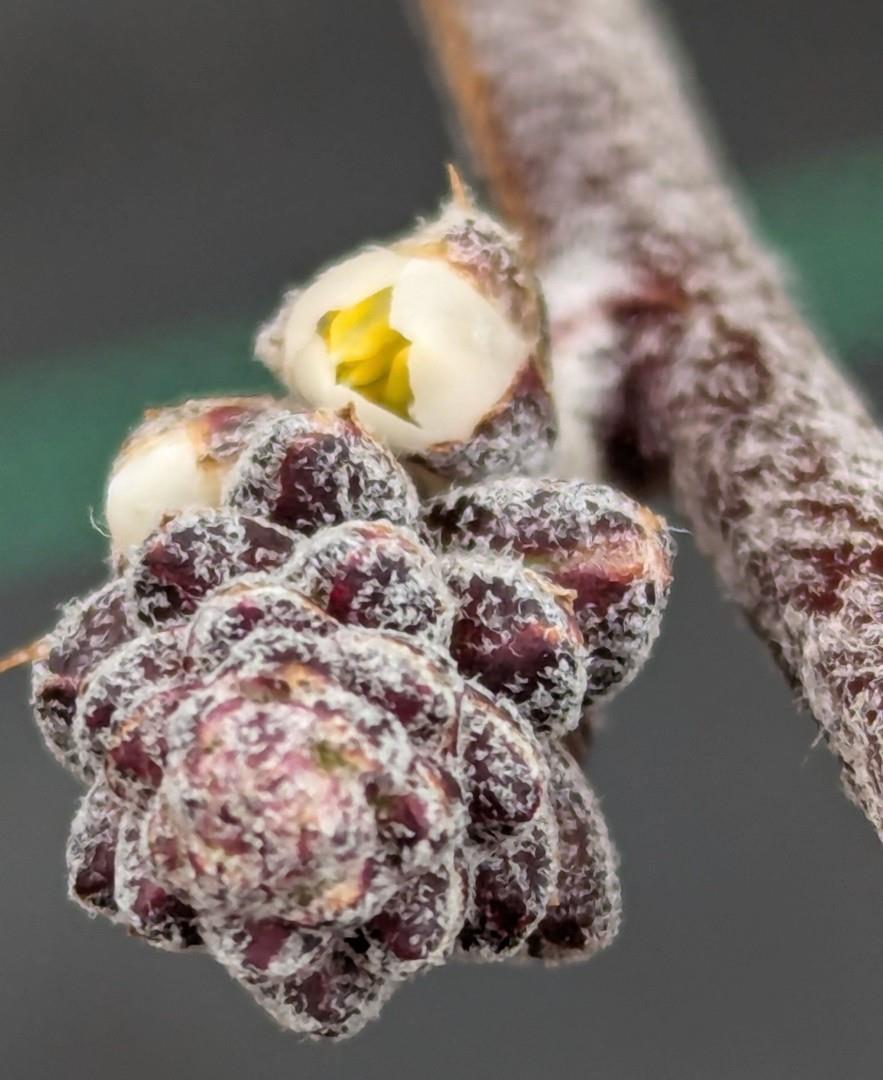
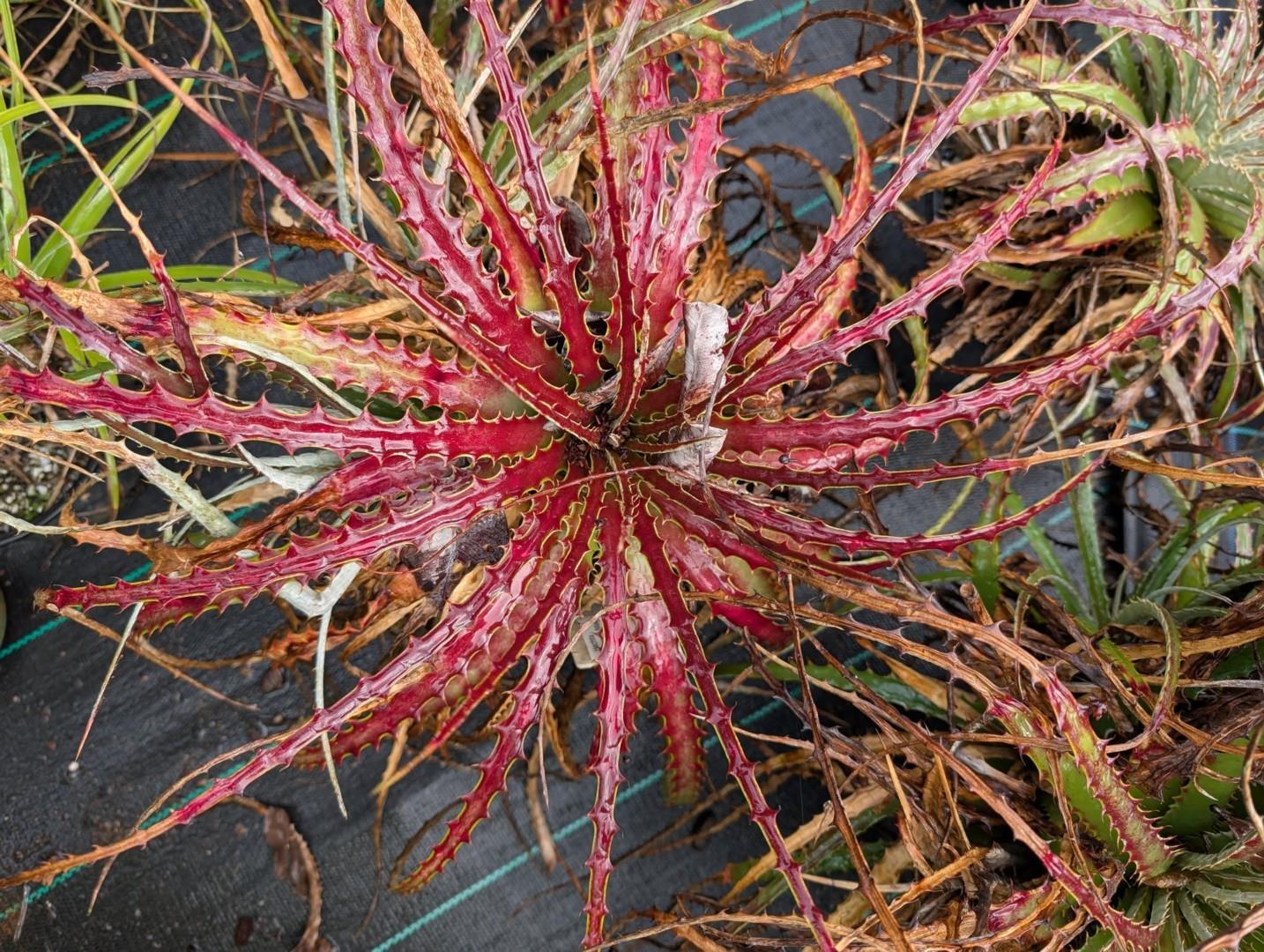
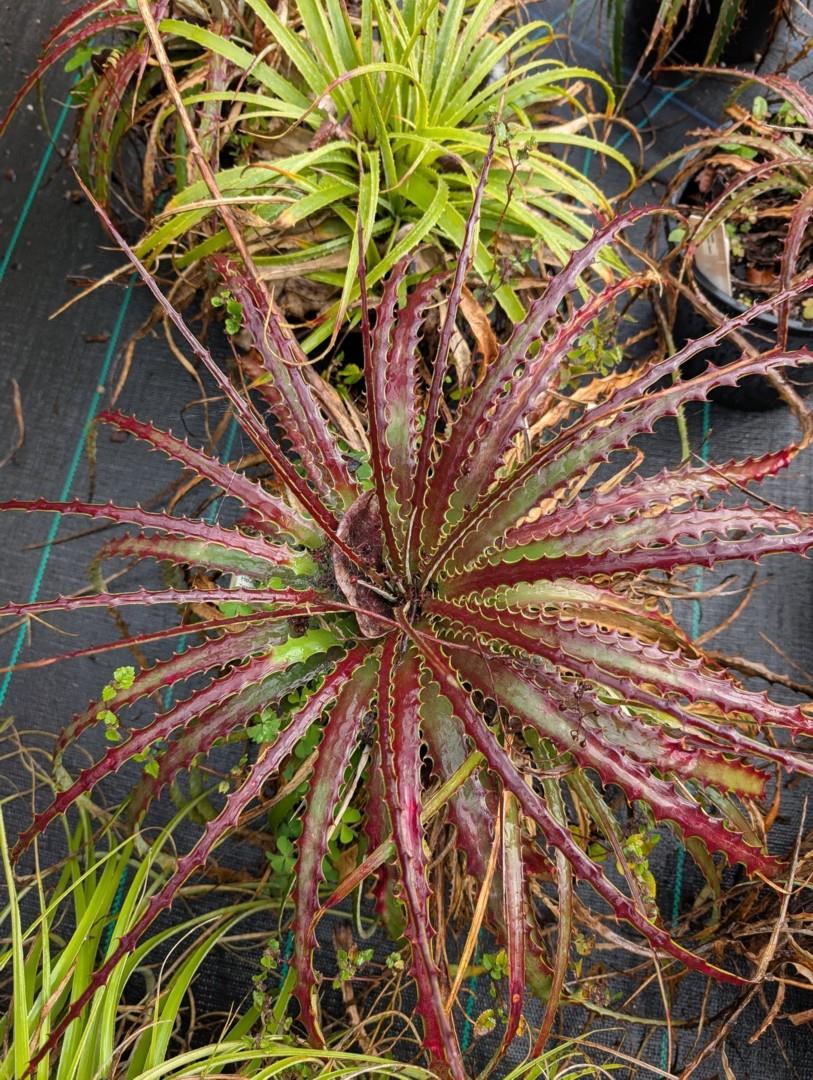
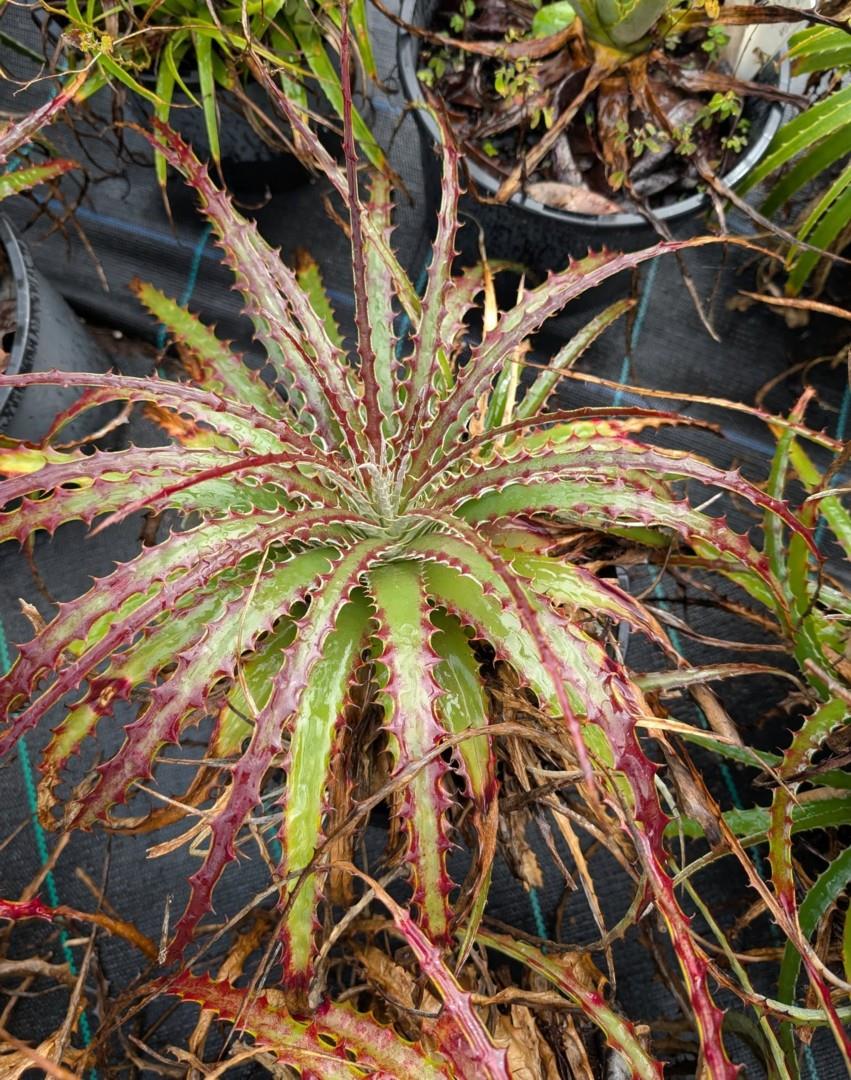
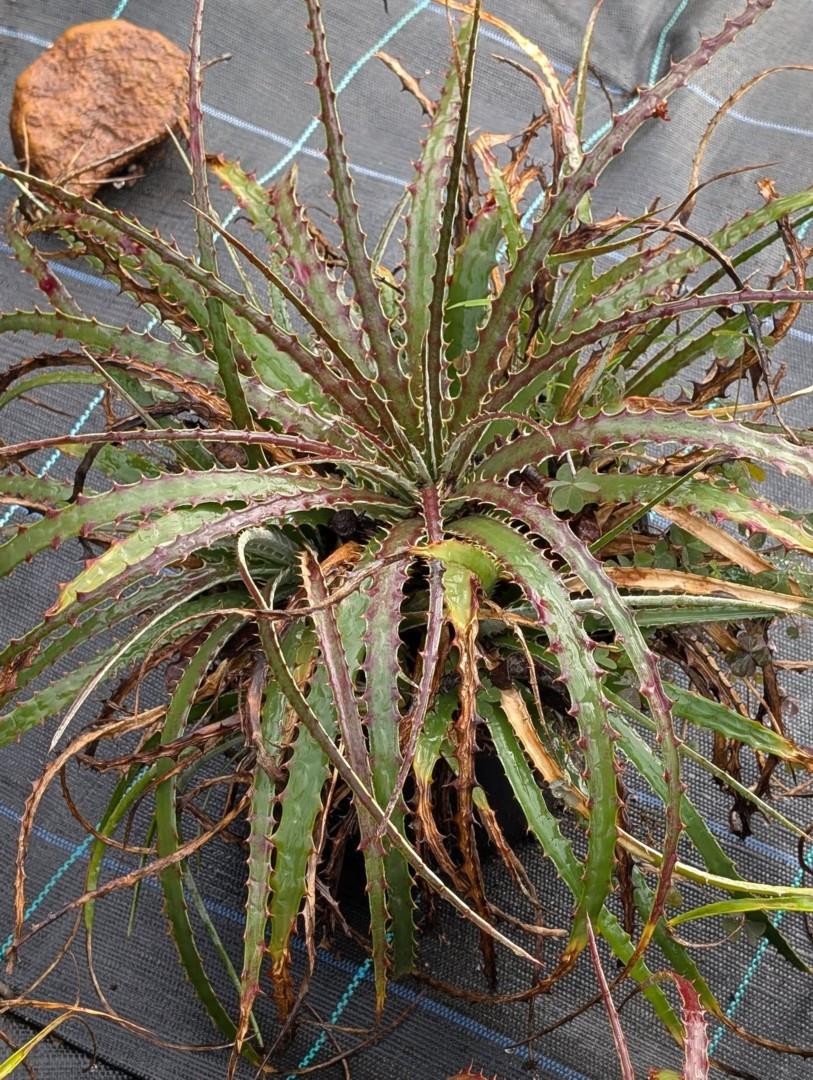
Hechtia texensis is distributed from Texas in the USA to the northern Mexican states of Chihuahua, Coahuila, and Zacatecas.
Hechtia texensis was distinguished from both H. elliptica and H. zacatecae using sepal length vs width (shape) as a key character (Smith 1937; Smith & Downs 1974); however, pistillate sepals of H. texensis were being compared to staminate sepals of both H. elliptica and H. zacatecae (Burt-Utley & Utley 1987). When staminate sepals as well as pistillate sepals and capsules of these taxa are compared with one another, it is impossible to distinguish either H. elliptica or H. zacatecae from H. texensis. Smith (1937) and Smith and Downs (1974) further distinguished H. elliptica from H. zacatecae by sepal characters that were characterized as elliptic and obtuse in H. elliptica but ovate and acute in H. zacatecae. Both shapes and apices are observed on the type specimens of both taxa. As noted previously, sepal shape within an individual flower in H. texensis is variable (Burt-Utley & Utley 1987) and an unreliable character. The sepals of H. elliptica were described as deep rose and those of H. zacatecae as being stramineous. Sepals on the holotypes of both taxa have minute maroon maculations, but those of H. elliptica are denser, giving them a "rose" rather than stramineous appearance. Furthermore, leaves of H. elliptica were characterized as being splashed bright rose, while those of H. zacatecae were green (Smith 1937; Smith & Downs l974). When specimens from the type series of H. elliptica were examined it was obvious that the leaf coloration resulted from a pigmented compound that was deposited on their leaf surfaces and also absorbed into their hypodermises. Our collections from the vicinity of the type locality of H. elliptica and near the type locality of H. zacatacae all support the synonymy of H. elliptica and H. zacatacae with H. texensis.
Representative specimens examined. MEXICO. Chihuahua. 20 km ENE of Cd. Jiminez, 5100 ft, 2 Oct 1973, Henrickson 13775 (LL, TEX). Coahuila. 8.8 mi NE of Glorietta on N side of Saltillo on MEX 40 between Saltillo and Monterey, 1410 m, 22 May 1991, Utley & Utley 8600 (BM, C, F, GH, K, M, MEXU, NY, TEX, UC, US, USF ); 18.3 mi NE of Glorietta on N side of Saltillo on MEX 40 between Saltillo and Monterrey, 1240 m, 22 May 1991, Utley & Utley 8601 (BM, C, M, GH, MEXU, MO, TEX, US, USF); 7.5 mi N of Glorietta on NW side of Saltillo where MEX 57 and MEX 40 junction on MEX 57 to Monclava,1460 m, 22 May 1991, Utley & Utley 8602 (MEXU, TEX, USF); 18.6 mi N of Glorietta on NW side of Saltillo where MEX 57 and MEX 40 junction on MEX 57 to Monclava, 1250 m,22 May 1991, Utley & Utley, 8603 (BM, C, GH, MEXU, US, USF);22.9 mi W of Saltillo at Glorietta on W side of Saltillo where MEX 57 and MEX 40 meet, on MEX 57 toward Torreon, 1340 m, 22 May 1991, Utley & Utley 8604 (MEXU, US, USF); just N of Coahuila-Zacatecas state line on MEX 54, 16.3 mi N of turnoff to Concepcion de Oro,23 May 1991, Utley & Utley 8606 (MEXU, USF).
Desc from S&D
Hechtia texensis S. Watson, Proc. Am. Acad. 20: 374. 1885.
Hechtia scariosa L. B. Smith, Contr. Gray Herb. 117: 20, pl. 1, figs. 63, 64. 1937.
Plant variable in habit, 2 m high.
Leaves many in a dense rosette, up to 8 dm long; sheaths large, subovate;
blades linear-triangular, pungent, up to 4 cm wide, densely appressed-cinereous-lepidote below, soon glabrous and shiny above, laxly serrate with uncinate spines up to 8 mm long.
Scape erect, over 1 m high, 2 cm in diameter near base
scape-bracts erect, the lower subfoliaceous, densely imbricate, the upper remote, ovate, acuminate, brown when dry, subchartaceous.
Inflorescence laxly bipinnate or tripinnate, subthyrsoid, sparsely white-floccose when young; branches up to 2 dm long, at least the larger ones laxly flowered toward the base.
Floral bracts very broadly ovate, acute, hyaline with several dark nerves, shorter than the sepals;
flowers subsessile, erect or suberect, 8-10 mm long.
Sepals broadly ovate, acute, up to 6 mm long, white, membranaceous, with 5 dark nerves, the central one extending to the margin, the female ones somewhat thickened with age;
petals elliptic, white, white-lepidote dorsally, the female short-connate, the male connate for about one-third their length;
stamens included;
ovary densely white-tomentose-lepidote; stigmas sessile.
TYPE. Havard 85 (holotype, GH), limestone bluffs in the Great Bend of the Rio Grande, western Texas, United States.
DISTRIBUTION. Known with certainty from the type collection only, though some sterile material may be conspecific.
Hechtia scariosa L. B. Smith, Contr. Gray Herb. 117: 20, pl. 1, figs. 63, 64. 1937.
Treated as a synonym of H. texensis, see Burt-Utley & Utley, Brittonia 39: 42-3. 1987; J. Brom. Soc. 40: 112-7. 1990
Desc from S&D.
Plant probably 2 m tall or more.
Leaves 35 cm long;
sheaths broadly ovate, 4 cm long, denticulate toward apex, pale-brown, lustrous;
blades narrowly triangular, 2 cm wide, laxly serrate with uncinate spines 5 mm long, glabrous above, densely pale-appressed-lepidote beneath.
Scape slender, glabrous;
upper scape-bracts ovate, acuminate, shorter than the internodes.
Inflorescence laxly pyramidal, 55 cm long, minutely pale lepidote;
primary bracts like the scape-bracts, 25 mm long;
branches much divided, up to 16 cm long, compressed near the base;
racemes densely spiciform or lax near the base.
Floral bracts broadly ovate, acuminate, slightly shorter than the sepals, deep-rose with a broad scarious margin;
flowers spreading; pedicels very short, obconic.
Sepals elliptic, acute, 6 mm long, 1-5-nerved, deep-rose with a broad scarious margin;
petals elliptic, obtuse, 9 mm long, connate for 3 mm;
stamens included, very unequal;
ovary more than half superior.
TYPE. Pringle 72 (holotype, GH; isotypes, BM, US), Jimulco, Coahuila, Mexico, 27 Apr 1885.
DISTRIBUTION. Dry sunny ledges and rocky soil, southwestern Texas and northern Mexico.
UNITED STATES. TEXAS, Brewster County: Boquillas, 28 May 1901, V. Bailey 354 (US); Glenn Springs, Chisos Mountains, 3 May 1937, Warnock 622 (GH); Sperry 622 (US); Juniper Canyon, Castolon, 9 May 1937, Cutler 967 (1,10); Hot Springs, 15 Apr 1938, Sperry 1318 (US); Dead Horse Mountains, 14 Apr 1938, Sperry 1323 (US). MEXICO. CHIHUAHUA: Sierra San Carlos, northeastern Chihuahua, 9 Aug 1940, Johnston & Muller 62 (GH). COAHUILA: Parras, Mar 1905, Purpus 1101 (F, MO, UC); Rancho La Luz, 22 Apr 1905, Endlich 8 (MO); Sierra de
as Cruces, Castillon to San Jose, 15 Aug 1940, Johnston & Muller 324 (GH); Sierra del Pino, western Coahuila, 26 Aug 1940, Johnston & Muller 733 (GH); Llano de Guaje, Tanque del Aparejo to Tanque Armendais, 28 Aug 1940, Johnston & Muller 770 (GH); Canon Espantosa, Sierra de San Vicente, Cuatro Cienagas, 24 Apr 1941, Schroeder 146 (GH); Potrero del Cuervo Chico, Tanque Bandido, 28 Aug 1941, Johnston 85 78 (GH); Sierra de la Fragua, Puerto Colorado, 1-3 Sep 1941, Johnston 8716 (GH); Ojo Caliente, Saltillo to Monterrey, 12 Jul 1946, Carzo, Rowell & Barkley 16-A1-507 (TEX); Saltillo, 2 Jul 1947, Barkley, Webster & Rowell 7250 (F, TEX); 45 miles north of Saltillo, 1 May 1959, Correll & Johnston 21312 (LL, staminate); 21313 (LL, pistillate). TAMAULIPAS: Huisachal, 30 km southwest of Victoria, 22 Jun 1949, Stanford, Lauber & Taylor 2040 (US, WTU); Jaumave, 2 Jul 1949, 2233 (US, WTU).
Hechtia scariosa - A Chihuahuan Desert Bromeliad by MARK W. MOHLENBROCK in J. Brom. Soc. 32(4): 156-8. 1982
The Bromeliaceae are represented in Texas by 2 genera: Hechtia and Tillandsia, having between them a total of 6 species. While on a research trip in Southwest Texas, I had the opportunity to observe one of these species, Hechtia scariosa L. B. Smith, in its native habitat.
Southwestern Texas is located in the northern portion of the Chihuahuan Desert. The landscape consists of desert and grassland, mountains, mesas, and plains. This area received 8-50 cm of rain annually, and has summer temperatures which commonly exceed 37C (100F). The rugged desert in this region is the home of Hechtia scariosa.
H. scariosa is confined to Brewster County: the southern part of the county is the location of Big Bend National Park. In the northern and eastern sections of the Park, the plants grow on gravelly plains, dry limestone slopes, and limestone ridges. The southwestern section of the park is of volcanic origin and no specimens were observed in this area. Since finding the plant in its native habitat may be a rugged and hot experience, it is easier to observe this species at the desert plant garden of the Judge Roy Bean Museum, Langtry, Texas, located 213 km (133 miles) east of Marathon, Texas, and 112 km (70 miles) west of Del Rio, Texas, on U.S. Route 90. The plant grown across the Rio Grande River in the Mexican states of Coahuila, Chihuahua, and Tamalipas.
Hechtia scariosa is of Agave habit, forming clumps reaching 60-90 cm in diameter. It resembles especially Agave lecheguilla with which it grows (Fig. 1). The leaves, which are arranged in a dense basal rosette, are up to 30 cm long, rigid and slightly recurved. The leaf margins are coarsely serrate with curved spines. Reddish patches on the upper leaf surface develop in the areas around the spines (Fig. 2) when the plant is exposed to intense sunlight and especially toward autumn. While the upper leaf surface is light green, smooth, and glossy, the lower surface is covered by a dense layer of tiny silvery scales. The plant sends up an erect scape, 60-120 cm in height, which supports a loosely branched panicle of flowers. The inflorescence is more densely flowered on the lower than on the upper branches. The plants are dioecious (unisexual, the sexes on separate plants), the flowers have 3 white petals and 3 brownish sepals which have few nerves. The fruit is a dark brown, shiny, capsule, which is ovoid, acutely tipped, and about 1 cm long.
H. scariosa is closely related to H. texensis Wats. which was described in 1885. The plant was collected "on limestone bluffs of the Great Bend of the Rio Grande," Brewster County, Texas. To date, the type collection is the only record of this species and it appears in the listing of plants which are possibly extinct, in Endangered and Threatened Plants of the United States, Ayensu and DeFilipps (1978, p.65).
H. texensis differs from H. scariosa by having broader sepals and longer branches of the inflorescence. Further evaluation of this relationship necessitates additional material of H. texensis.
The name H. texensis is occasionally used erroneously for H. scariosa in the botanical literature and in plant catalogs.
H. scariosa is available commercially and can be grown quite easily. Since H. scariosa is terrestrial, it can be grown in a potting mix suitable for cacti. A mix of 2 parts humus: 3 parts coarse sand: 1 part peat moss, has been used with success. In addition, a small amount of crushed limestone may be added to the potting mix. Pots should be 1/3 filled with gravel before adding the potting mix and plant. The plants prefer direct sunlight and can be grown easily with cacti and succulents. In direct light, the characteristic red patches on the leaves will develop, adding to its beauty as a cultivated plant. During the warmer months of the year, watering should be twice each week, while in winter, watering should be reduced to once each week. The plants will eventually form clusters and may then be divided. Rauh (1979) notes that the "mother rosette" of species of Hechtia does not die after blooming, but will flower repeatedly in addition to forming offshoots; this trait adds to its value for the bromeliad or succulent grower.
For those interested in acquiring this interesting species, I request help in conserving it by purchasing specimens which are propagated and not field collected. Special thanks are due to the National Park Service; Big Bend National Park, for their cooperation.
Type: Pringle 72 (holotype, Gray Herbarium; isotypes, British Museum Nat. History, U.S. National Herbarium) Jimulco, Coahuila, Mexico, April 27, 1885.
Additional specimens examined: Cutler 967 (1937); Coahuila, Mexico: Purpus 1101 (1905), Endlich 8 (1905), Stanford 88 (1948).
Hechtia texensis S. Watson by Burt-Utley & Utley, Brittonia 39: 42-3. 1987
Hechtia texensis S. Watson, Proc. Amer. Acad. Sci. 20:374. 1885.
TYPE: UNITED STATES. Texas: on limestone bluffs in the Great Bend of the Rio Grande, Aug 1883, Havard 85 (Holotype: GH!; Isotype: GH!).
Syn. Hechtia scariosa Lyman B. Smith, Contr. Gray Herb. 117: 20. 1937.
TYPE: MEXICO. Coahuila: Limestone ledges, hills near Jimulco, 27 Apr 1885, Pringle 72 (Holotype GH!; Isotypes: BM!, F!, NY-2 sheets!, US!).
Hechtia texensis and H. scariosa are treated as distinct species in Texas, separated by sepal size and nervation as well as inflorescence density (Correll & Johnston, 1970). However, some researchers working with the floras of Texas and northern Mexico have had problems distinguishing these two species. Johnston identified at least one of his collections (Johnston et al. 10872) as "Hechtia texensis (incl. H. scariosa L. B. Sm.)," while D. S. Lewis, a former University of Texas student, annotated a number of specimens previously identified as H. scariosa as H. texensis.
Hechtia texensis, as recognized by Smith and Downs (1974), is known only from the type collection consisting of parts of a pistillate inflorescence at anthesis and fragments of capsular material. More recent collections from the vicinity of the Big Bend National Park in Texas have been identified as H. scariosa (e.g., Correll & Rollins 23619, Warnock 14047). Smith (1937, 1938; Smith & Downs, 1974) has consistently distinguished H. texensis from potentially related taxa on the basis of its sepals that are at least as broad as long, in contrast to sepals much longer than broad (H. scariosa, H. zacatacae). While sepal shape can be an important character in Hechtia, our research has supported Smith's observation (Smith, 1937) that there may be significant floral differences between pistillate and staminate flowers within Hechtia species. Not only have we observed differences in inflorescence form, petals, and floral bracts, but also in sepal shape. When Smith (1937) described H. scariosa, the specimens available to him, Pringle 72 (GH) and Purpus 1101(F), consisted of parts of staminate inflorescences in which the sepals were much longer than broad and which Smith characterized as elliptic. However, other specimens of Pringle 72 (BM, NY) also contain fragments of a pistillate inflorescence with very broadly ovate sepals like those observed on the type of H. texensis. It was impossible to distinguish these taxa using sepal shape or other floral or vegetative characters. Based on this, it is our conclusion that H. scariosa is conspecific with H. texensis.
Hechtia texensis has been distinguished from H. zacatacae using sepal shape as a key character (Smith, 1937, 1938; Smith & Downs, 1974), but pistillate sepals of H. texensis were being compared to staminate sepals of H. zacatacae. Descriptions of these two taxa also characterize staminate sepals of H. texensis (as H. scariosa) as elliptic and those of H. zacatacae as ovate (Smith & Downs, 1974). Examination of staminate flowers showed no significant differences between sepals of H. texensis and H. zacatacae. In both species, sepal shape within an individual flower is variable. Floral bract and sepal color were also utilized to separate H. zacatacae from H. texensis (as H. scariosa). The degree of pigmentation in floral parts of H. texensis is variable, ranging from conspicuously roseate to stramineous with almost imperceptible maroon spots. This latter coloration was observed on floral bracts and sepals of the holotype of H. zacatacae (Kirkwood 5, GH!), which Smith (1937) described as stramineous. Although these species share similarities in floral characters traditionally used to separate them, they differ in floral bract size. Floral bracts of staminate and pistillate flowers of H. texensis are consistently smaller than those of H. zacatacae (5 vs 7 mm) and shorter than the sepals while those of staminate flowers of H. zacatacae are equal to exceeding the sepals. More collections are needed from the type locality of H. zacatacae to determine the significance of the observed differences in floral bracts. Until that time H. zacatacae is best maintained as distinct from H. texensis.
Hechtia texensis has been separated from H. mexicana on the basis of sepal size and apex form (Smith, 1937; Smith & Downs, 1974). While sepal size is an effective character here, flower size in general immediately distinguishes these two species. Flowers of H. texensis are 8-10 mm long, as reported (Smith, 1937; Smith & Downs, 1974), but flowers of H. mexicana are smaller (5-7 mm long). The type material of H. mexicana consists of parts of a pistillate inflorescence with capsules. It is apparent from our examination of this material that capsule length was included in the measurement of these flowers, increasing apparent flower size.
Hechtia texensis is most closely allied with several other species in the genus with which it shares its lateral, conspicuously lepidote inflorescences and ample navicular floral bracts that exceed the pedicels and much, if not all, of the sepals in length. Taxa in this group are distinguished primarily on the basis of floral characters. We are continuing our evaluation of H. texensis and its allies as part of our ongoing study of Hechtia.
Representative specimens examined: MEXICO. CHIHUAHUA: 20 km ENE of Cd. Jimenez, Hendrickson 13775 (LL). Coahuila: 10.5 km ESE of Ejido La Rosita near N end of Laguna del Guaje, Chiang et al. 7364A (LL); SW flank of Sierra del Carmen, Chiang et al. 9259 (LL); 45 mi N of Saltillo, Correll & Johnston 21313 (LL); Sierra de las Cruces, 7 mi N of Santa Elena mines, Johnston & Muller 324 (LL); E border of Llano de Guaje, Johnston & Muller 770 (LL); Potrero de Cuervo Chico N of Tanque Bandido, Johnston 8578 (GH, MEXU); l 1 km N of La Esmeralda, Johnston et al. 10872 (MEXU); Parras, Purpus 1101 (F, MO). UNITED STATES. Texas. Brewster Co.: rocky hills near Hot Springs, Big Bend National Park, Correll & Rollins 23619 (LL); Reed Plateau, 2 mi W of Terlingua, Warnock et at. 1160 (LL); near McKinney Springs, Big Bend National Park, Warnock 14047 (LL), Warnock 21610 (TEX). Presidio Co.: 5 mi from Lajitas, Correll 23555 (LL); between Lajitas and Big Hill on Hwy 170, Higgens 6789 (NY).
Hechtia elliptica L. B. Smith, Contr. Gray Herb. 117: 20, pl. 1, figs. 61, 62. 1937.
Desc from S&D
Only the staminate plant known, to 5 dm high.
Leaves 27 cm long;
sheaths broadly ovate, 25 mm long, flavous or castaneous, serrulate, glabrous;
blades narrowly triangular, pungent, 1-2 cm wide, splashed with bright-rose, densely appressed-white-lepidote but soon becoming glabrous above, the teeth distant, 4 mm long, straight or uncinate, dark-castaneous.
Scape slender, strongly compressed, soon glabrous;
scape-bracts small, ovate, acute, thin, the upper remote.
Inflorescence laxly bipinnate, 2 dm long, pale-lepidote;
primary bracts like the scape-bracts, much shorter than the axillary spikes;
spikes suberect, dense or subdense, 2-5 cm long, 1 cm in diameter.
Floral bracts suborbicular, apiculate, nearly equaling the sepals, very thin, rose with a broad hyaline margin, erose;
flowers suberect, subsessile.
Sepals elliptic, obtuse, 5 mm long, 3-nerved, broadly hyaline margined;
petals elliptic, obtuse, 8 mm long, pale-lepidote outside, connate for 3 mm;
stamens included.
TYPE. Palmer 205 in series of 1898 (holotype, GH; isotype, UC), Saltillo, Coahuila, Mexico, 1898.
DISTRIBUTION. Exposed limestone hillsides, Coahuila, Mexico.
MEXICO. COAHUILA: Tanque Jerico, 27° 34' N, 22-23 Aug 1941, Johnston 8337 (GH).
Hechtia zacatecae L. B. Smith, Contr. Gray Herb.- 117: 21, pl. 1, figs. 65, 66. 1937.
Desc from S&D
Known from fragments only.
Leaves to 3 dm long;
sheaths broadly ovate, about 5 cm long, only slightly broader than the blades, densely serrulate, stramineous, glabrous, even, lustrous;
blades narrowly triangular, pungent, 2 cm wide, densely appressed-white-lepidote, soon glabrous above, the teeth uncinate, 5-6 mm long, flavous to dark-castaneous, distant.
Scape slender, soon glabrous;
scape-bracts broadly ovate, apiculate, the upper ones small, remote.
Inflorescence laxly bipinnate or tripinnate, pale-subfloccose-lepidote;
primary bracts like the scape-bracts;
branches suberect, up to 17 cm long.
Floral bracts broadly ovate, acuminate, about equaling the sepals, nerved, membranaceous, pale-stramineous, broadly hyaline-margined;
staminate flowers subsessile.
Sepals ovate, acute, 5-6 mm long, membranaceous;
petals elliptic, obtuse, 8 mm long, white, sparsely lepidote outside;
stamens included.
Capsule ovoid, acute, 1 cm long; carpels even.
TYPE. Kirkwood 5 (holotype, GH; isotype, F), Cedros, northern Zacatecas, Mexico, 1908.
DISTRIBUTION. Steep slopes, type locality.
MEXICO. ZACATECAS: Cedros, May 1908, Lloyd 125 (GH, US).